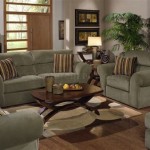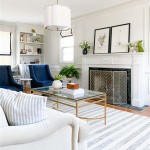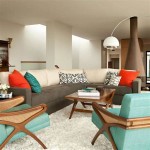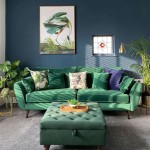Living Room Ideas In Grey and White: A Comprehensive Guide
The combination of grey and white has become a perennial favorite in interior design, particularly for living rooms. This pairing offers a versatile and sophisticated base that can be adapted to various styles, from minimalist modern to cozy traditional. The neutral palette provides a calming atmosphere, allowing for pops of color and textural elements to be incorporated without overwhelming the space. This article explores various approaches to designing a grey and white living room, examining different shades, materials, and design principles to create a harmonious and aesthetically pleasing environment.
Understanding the Nuances of Grey and White
The success of a grey and white living room lies in understanding the subtle variations within each color. Grey is not a monolithic shade; it encompasses a wide spectrum from cool, almost bluish tones to warm, earthy hues. Similarly, white can range from stark, bright whites to softer, creamier shades. The choice of specific grey and white tones significantly impacts the overall ambiance of the room.
Cool greys, often with blue or green undertones, create a contemporary and serene feel. They pair well with bright, clean whites for a crisp and modern aesthetic. These cooler tones are particularly effective in rooms with ample natural light, as they can enhance the sense of spaciousness. In contrast, warmer greys, which lean towards beige or brown, evoke a more inviting and comfortable atmosphere. These are often complemented by off-whites or creamy whites, resulting in a softer and more traditional appearance. The interplay between warm and cool tones can also be used strategically to balance the light and temperature within a room. For example, a living room that receives a lot of southern exposure might benefit from cooler greys to mitigate the warmth, while a north-facing room could benefit from warmer greys to add a touch of coziness.
Beyond the basic color temperature, the intensity or depth of the grey plays a critical role. Lighter greys, such as dove grey or silver grey, create an airy and spacious feeling, while darker greys, like charcoal or slate, add depth and drama. The choice of grey intensity often depends on the size of the room and the desired level of formality. Smaller living rooms typically benefit from lighter greys to maximize the sense of space, while larger rooms can handle darker greys without feeling cramped. Darker greys can also be used as accent walls to create a focal point and add visual interest without overwhelming the entire room.
The finish of the paint also contributes to the overall effect. Matte finishes tend to absorb light, creating a softer and more muted appearance, while glossier finishes reflect light, making the room feel brighter and more vibrant. Eggshell and satin finishes are popular choices for living rooms as they offer a balance between light reflection and durability. Textured paint, such as Venetian plaster or limewash, can add depth and visual interest to the walls, creating a unique and tactile environment. These specialty finishes can be particularly effective in larger living rooms where the texture can be fully appreciated.
Integrating Texture and Pattern
While grey and white provide a neutral foundation, the inclusion of texture and pattern is essential for adding visual interest and preventing the space from feeling flat. This can be achieved through various elements, including furniture, textiles, and accessories. The strategic use of texture and pattern can elevate the design from simple to sophisticated.
Textural contrast is crucial in a grey and white living room. Combining smooth and rough textures creates a dynamic and engaging environment. For example, a smooth white sofa can be paired with a textured grey rug, such as a shag rug or a woven jute rug. Similarly, a smooth lacquered coffee table can be juxtaposed with a rough-hewn wooden side table. This interplay of textures adds depth and prevents the space from feeling one-dimensional.
Different materials offer a range of textures that can be incorporated into the design. Natural materials, such as wood, stone, and linen, bring warmth and organic texture to the space. Wood furniture with visible grain, stone fireplaces, and linen curtains add a tactile element that complements the neutral palette. Conversely, man-made materials, such as metal, glass, and concrete, offer a sleek and modern texture. Metal accents, glass coffee tables, and concrete planters contribute to a contemporary aesthetic.
Pattern can be introduced through various elements, including rugs, cushions, artwork, and wallpaper. Geometric patterns are a popular choice for contemporary living rooms, while floral patterns add a touch of femininity and elegance. Abstract patterns can create a more artistic and eclectic feel. When incorporating patterns, it's important to consider the scale and color palette. Large-scale patterns can be visually striking but may overwhelm a small room, while small-scale patterns can add subtle visual interest without dominating the space. The colors within the patterns should complement the grey and white scheme, often incorporating pops of color to add vibrancy.
The use of layering techniques can also enhance the textural interest in a grey and white living room. Layering rugs, cushions, and throws adds depth and dimension to the space. For example, layering a textured rug over a plain rug can create a focal point and add warmth. Similarly, layering cushions with different textures and patterns on a sofa adds visual interest and comfort. Throws can be draped over furniture or displayed as decorative accents, adding a touch of coziness and sophistication.
Adding Pops of Color and Personal Touches
While grey and white create a versatile backdrop, the addition of color and personal touches is vital for injecting personality and preventing the space from feeling sterile. Color can be introduced through various elements, including artwork, accessories, and accent furniture. The choice of colors should reflect personal preferences and complement the overall design aesthetic.
One effective approach is to use a single accent color to create a cohesive and visually appealing space. This accent color can be incorporated through artwork, cushions, throws, and decorative accessories. Popular accent colors for grey and white living rooms include blues, greens, yellows, and pinks. Blue adds a sense of serenity and calm, green brings a touch of nature indoors, yellow creates a warm and inviting atmosphere, and pink adds a touch of femininity and elegance. When choosing an accent color, it's important to consider the overall style of the room and the desired mood.
Artwork is a powerful tool for adding color and personality to a grey and white living room. A large statement piece can serve as a focal point, drawing the eye and adding visual interest. Alternatively, a collection of smaller pieces can create a gallery wall, showcasing personal tastes and interests. The artwork should complement the color palette of the room and reflect the overall design aesthetic. Abstract art is a popular choice for contemporary living rooms, while landscape paintings add a touch of traditional elegance. The frames should also be considered, as they can contribute to the overall style of the room. Simple, clean frames are often preferred for modern spaces, while more ornate frames add a touch of sophistication to traditional settings.
Accessories, such as vases, candles, and decorative objects, provide an opportunity to add subtle pops of color and texture. These elements can be arranged on shelves, coffee tables, and side tables to create visually appealing vignettes. The accessories should be carefully curated to reflect personal tastes and interests. Plants are a great way to add a touch of nature and freshness to a grey and white living room. Greenery not only adds color but also improves air quality and creates a more relaxing atmosphere. Different types of plants can be used, depending on the size of the room and the amount of natural light available. Tall plants can be placed in corners to add height, while smaller plants can be arranged on shelves or coffee tables.
Personal touches, such as family photos, travel souvenirs, and handmade items, make the living room feel more personal and inviting. These items should be displayed thoughtfully, creating a sense of history and connection. Family photos can be framed and arranged on a gallery wall or displayed on shelves. Travel souvenirs can be incorporated into the décor, adding a touch of worldly flair. Handmade items, such as knitted throws or pottery, add a unique and personal touch.

37 White And Silver Living Room Ideas That Will Inspire You

Grey And White Living Room Ideas Designcafe

11 Grey Living Room Ideas Leader Floors Blog

30 Calming Grey And White Living Room Styling Ideas

Grey Living Rooms Design Ideas Schemes Farrow Ball

35 Stylish Gray Rooms Decorating With
40 White Living Room Ideas And Designs Renoguide N Renovation Inspiration

28 Cozy Living Room Decor Ideas To Copy Society19

The Best 33 Black White Living Room Decor Ideas Rugs Direct

White Gray And Black Living Room Design Ideas








